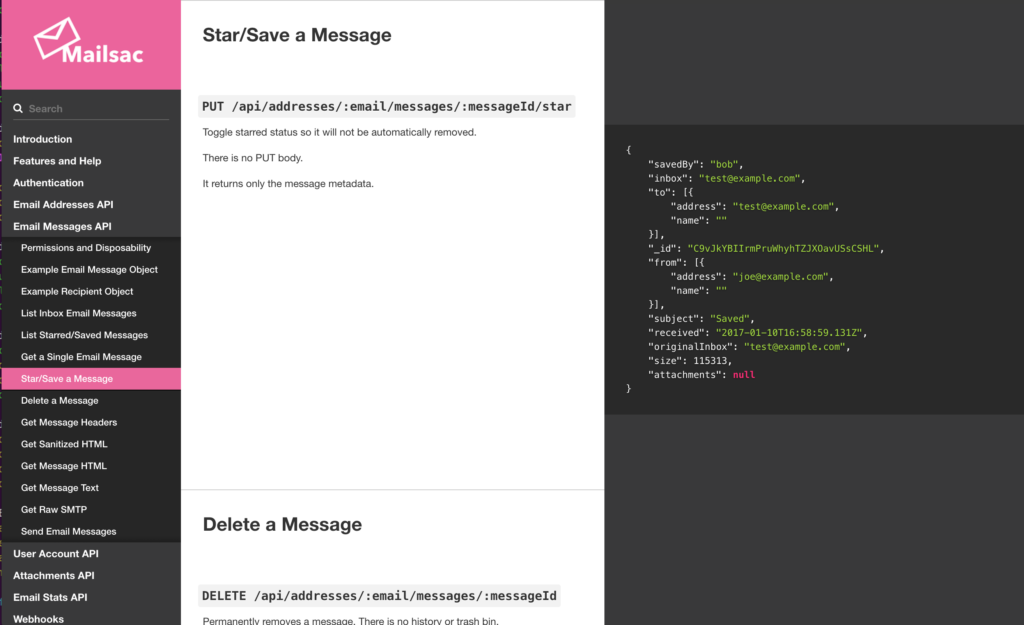Until now, all transactional messages sent through the Mailsac API only allowed text. With the latest release, the API supports HTML and attachments. Additionally supported is sending an entire raw SMTP message over the REST API.
New Transactional Email Fields
HTML
You can provide full HTML in the html field when doing a POST /api/outgoing-messages. This was not possible in previous versions of the API.
Attachments
Attachments can be sent and linked into the html by including an array of attachment objects in the attachments field.
Example Inline Attachment
{
"contentDisposition": "attachment",
"content": "3asfji32gia...93as==",
"encoding": "base64",
"filename": "2561a.jpg",
}
Example Attached File
{
"cid": "[email protected].",
"contentDisposition": "inline; filename=2561a.jpg",
"content": "3asfji32gia...93as==",
"encoding": "base64",
"filename": "2561a.jpg",
}
Received Headers
Persisting received headers is now possible – send a single string or array of received headers. This allows you to receive SMTP in your application, pre-parse it, and pass along received information.
Raw SMTP over HTTP
If you want to test SMTP parsing or have an application that generates raw SMTP messages, put the entire SMTP contents into the raw field when doing a POST /api/outgoing-messages.
Mailsac will parse the headers, text, HTML, and attachments, then deliver it for you.
All other fields will be ignored when you send a raw message.
Read the API docs for sending transactional emails over HTTP
